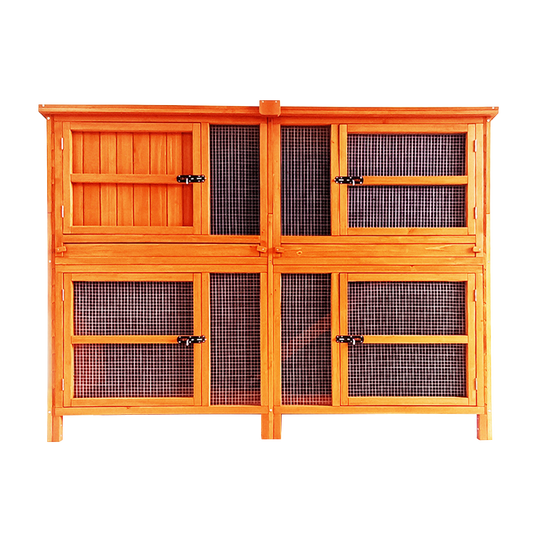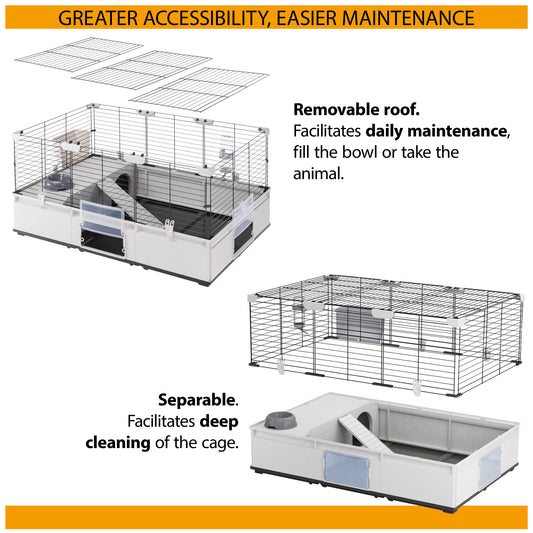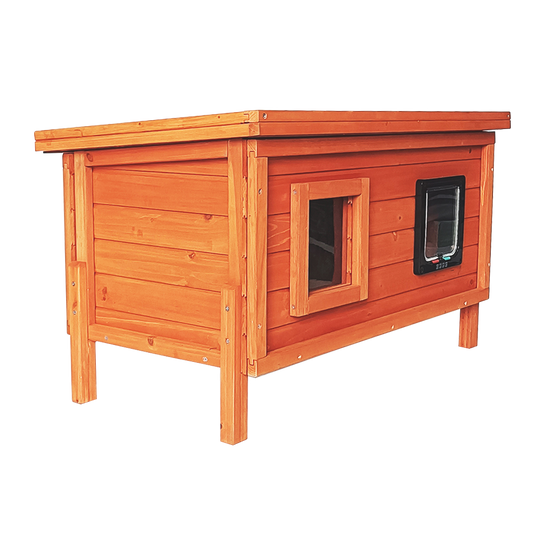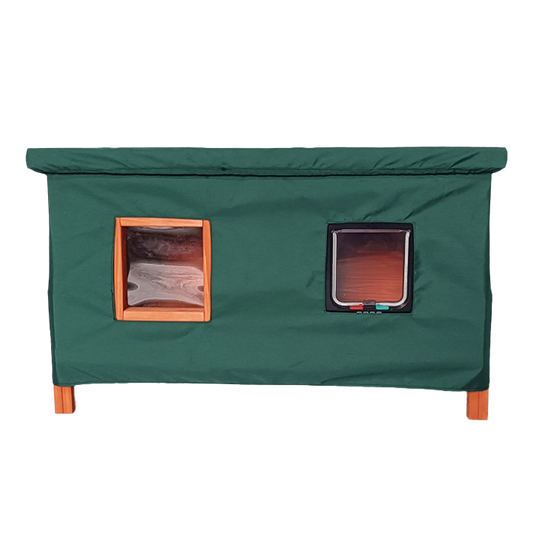By Karen Cornish
July has been designated as National Pet Hydration Awareness Month to highlight the importance of keeping dogs cool and hydrated during the summer months. While some water-loving hounds have no trouble keeping themselves topped up with fluids in the hottest months, others might need some encouragement. Make sure you follow our top tips to get your dog drinking.
Why is hydration so important?
Water intake is essential to a dog’s overall health as it replaces the fluids an animal loses through urinating and defecating. It is also necessary for maintaining healthy circulation and digestion.
A dog that becomes dehydrated loses more than just water as when fluids are lost, so too are essential minerals such as chloride, sodium, and potassium.
How much water do dogs need to drink?
As a rule of thumb, adult dogs need around an ounce of water per pound of body weight to maintain a good level of health.
When things heat up, the amount of water a dog’s body requires will increase. In extreme temperatures it is vital that you know how to give your pet the hydration they require.
Signs of dehydration in dogs
Keep an eye on your dog during hot weather for any signs that they could be suffering from dehydration. If ignored, symptoms could worsen leading to ill health, so the earlier you can spot the signs in your dog, the better.
Dry skin, sunken eyes, dry gums, loss of appetite, drooling, panting, weakness, lack of energy, trembling and an increased heart rate are all signs that a dog could be experiencing dehydration. A simple test you can try on your dog if you suspect dehydration is known as ‘skin tenting’.
Gently pull up a small portion of your dog’s skin around their shoulders and then let it go. The skin of a sufficiently hydrated dog will snap back into place quickly, while the skin of a dehydrated dog will remain in a ‘tent’ position or will fall back slowly.
If you suspect that your dog is dehydrated, you should seek veterinary attention as soon as possible so your pet can get the treatment they need.
Taking in water
Dogs on a wet food diet will consume a certain amount of water every time they eat, so will not need to drink as much as dogs on a dried food diet. In fact, wet dog food is often made up of 75-80% water while dried food is only 6-10% water. If you suspect your dog is not drinking enough and they are fed on dry food, it might be worth considering a switch to a wet food variety.
Dogs should always have access to water bowls so that they can drink at any time, and these bowls should be regularly refreshed, and kept cool and clean. Some dogs enjoy having ice cubes added to their drinking water on hot days to help it stay colder for longer.
Out and about
Don’t forget to take a supply of drinking water for your dog when you go out for the day. While lots of dog-friendly cafes and shops offer water bowls outside for canine patrons, not all dogs are happy to drink from communal bowls.
There are lots of clever travel water solutions available these days, from collapsible bowls to water bottles with bowls attached. Whichever you choose, fill it up with fresh water before you leave home and try to keep it cool by using an insulated bag or cool pack. This will make it more appealing to your pet and encourage them to drink.
If your dog is traveling in a car, make sure they don’t get too hot by using a sunshade on the window to reflect the sun’s rays. If your dog is travelling in the boot of your car, be aware that your air conditioning might not reach far enough back for your dog. Schedule plenty of stops along your route to check on your dog and to give them the opportunity to grab some fresh air and a drink.
If you are taking a trip to the beach, try to discourage your dog from drinking sea water as the salt content is likely to make them vomit and cause them to become thirstier. Also beware of letting your dog drink from rivers or lakes where there could be blue-green algae present. The types of toxins produced by blue-green algae vary but the effects can be serious, including convulsions, breathing problems or organ failure.
Top tips for getting your dog to drink
· Keep your dog’s water bowls clean and hygienic by washing them frequently and replacing the water regularly throughout the day so it stays fresh.
· The material that your dog’s water bowl is made from could be affecting their drinking experience. For example, some puppies do not like the reflections caused by shiny stainless steel bowls. If you think this could be the case, try a variety of bowls until you find one that your dog is happy with.
· If your dog is reluctant to drink more in hot weather, you could include some fresh water with their food or try adding little chicken broth to their water to make it more appealing.
· Older dogs or those with health concerns such as diabetes, kidney problems or thyroid issues, may struggle more than most to keep hydrated on hot days. Speak to your vet for advice about your individual pet’s needs and they will be able to help you to maintain healthy hydration levels in your pet.
If your older dog has mobility problems such as arthritis, they may find drinking from a water bowl on the floor uncomfortable. Try raising bowls up to make it easier for your dog to drink or put their bowl on a non-slip mat to keep it from moving around.
Heatstroke
Sun-worshipping dogs are generally good at seeking out shade when it gets too hot but they can suffer from heatstroke if they become dangerously overheated. Beware of leaving your dog in a sun room or conservatory when you go out as they can quickly heat up like greenhouses on a hot day.
The message of not leaving dogs in cars on hot days has been widely spread but some owners do not realise just how hazardous this can be, even on a moderately warm day. The temperature in a car can still rise to dangerous levels despite being parked in the shade with windows open.
A car’s interior can become hotter than the sun, even when the temperature outside doesn’t feel that warm. For example, if it is 22 C° outside of a car, the inside could reach as high as 47 C° within an hour.
UK research has found that although 1 in 7 dogs that are taken to vets with heatstroke will die, 98% that are seen early with mild symptoms are likely to survive. Therefore, it is important to familiarise yourself with the early signs of heatstroke so that you can act quickly if your dog is affected.
Signs of heatstroke
Heatstroke can prove fatal to dogs if left untreated, so on hot sunny days it’s vital that you look out for the following symptoms:
· Excessive panting
· Excessive drooling
· Foaming at the mouth
· Glazed eyes
· Bright red gums
· Increased heart rate
· Confusion or disorientation
· Shaking or wobbling
· Collapse or seizure
If you suspect that your dog is suffering from heatstroke you should move it to a cool well-ventilated area and use a fan if you have one. Offer your dog small amounts of water and drape towels soaked in cold water over their body. Contact your vet as soon as possible so they can advise you on what to do next.
Breeds at risk
Any dog can suffer from heatstroke but some individuals are more at risk than others. Dogs that are large, energetic, overweight or have particularly thick coats or flat faces will find it harder to keep themselves cool.
Most dogs are comfortable at temperatures between 15-25 C° but some will struggle to maintain a low body temperature even on cooler days.
If you have a flat-faced breed of dog – such as a Bulldog, French Bulldog or Pug – they may find it harder to lose heat through panting due to their shorter muzzles. Research has found that these dogs are more than twice as likely to develop heatstroke than dogs with longer muzzles, so extra care should be taken with these breeds.
Sunburn
Sunburn can be very uncomfortable and painful for affected dogs, and just like humans, dogs can develop skin cancer through exposure to the sun’s harmful UV rays.
Despite being mostly covered in hair, dogs can become sunburnt on sunny days so may need to wear sunscreen to protect them during the summer months. This is particularly important for dogs that have white hair and light skin, and on vulnerable areas of the body such as the tips of the ears, nose, and stomach.
Choose a sunscreen product that has been specially designed for use on pets and make sure it offers at least factor 30 protection. Many of the ingredients in human sunscreen are toxic to dogs if ingested through self-grooming so only use a dog-safe formulation.
When applying sunscreen to your dog, do so gently and be careful not to get any of it in your pet’s eyes. Once the sunscreen has been applied, it is a good idea to give your dog something to do or play with them as a distraction so they don’t immediately start trying to lick it off.
Keeping your dog cool
· There are lots of cooling products available that are specially designed to cool down hot dogs. These include bandanas and T-shirts that can be soaked in cold water before being worn, and cooling mats that use a special gel that goes cold under the body pressure of a pet lying on it. There are also ice ball toys that can be frozen again and again to provide some freezing fun.
· If your dog enjoys a stuffed food toy, such as a Kong, you could fill one and then freeze it to create a longer-lasting cool treat.
· Avoid taking your dog out or leaving them in the garden during the hottest part of the day – 10am to 4pm. If necessary, change your usual walking routine to earlier or later in the day when the temperature is lower.
· Pavements can heat up more than you realise and it is not unusual for dog paws to get burnt by walking on hot paths. Dogs Trust recommends that you take the tarmac test before walking your dog on a hot day. If you can’t comfortably hold your hand on the pavement for 5 seconds, it’s too hot for your dog’s feet.
· If your dog loves water, invest in a paddling pool so they can splash around to cool down outside. You could also float plastic balls on the surface for them to retrieve.
· Excess dead hair caught in your dog’s coat will trap heat, making them hotter so it is important to keep on top of grooming. A daily groom with help to make a hot dog more comfortable.
· At times of excessive heat, it might be necessary to keep your dog indoors all day. Close curtains and use fans to help keep them cool and provide them with enrichment activities – such as puzzle feeders or a game of hide and seek to stave off boredom.
If you enjoyed this article, why not read:
Vet-Approved Homemade Dog Food Recipes!
Unleashing Fun in the UK's Top Dog-Friendly Destinations
Tackling Common Dog Behaviour Issues with a Wag and a Smile!









